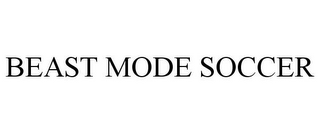
I previously wrote about the trademark application for BEAST MODE SOCCER. In that case, evidence of third party use was not close enough to weaken the two registered marks for BEAST MODE owned by retired NFL football player Marshawn Lynch.
Another issue in that case was whether the addition of SOCCER in the applied-for mark was sufficient to distinguish it from the registered marks. It was not.
The court said, “When one incorporates the entire arbitrary mark of another into a composite mark, . . . inclusion of a merely suggestive or descriptive element, of course, is of much less significance in avoiding a likelihood of confusion.”Â
How was SOCCER word was descriptive of the applicant’s T-shirt goods? The applicant Copeland-Smith was a soccer coach. And he had been training soccer players under his mark BEAST MODE SOCCER, which was registered under another applciation for “coaching services in the field of soccer; providing group coaching and learning forums in the field of soccer.”Â
The overlapping elements, BEAST MODE, were strong and the SOCCER element was weak as descriptive. Therefore, the addition of SOCCER to BEAST MODE was not sufficient to distinguish it from BEAST MODE and avoid a likelihood of confusion.
Case:Â In Re: Copeland-Smith, No. 2018-1968 (Fed. Cir. 2019).